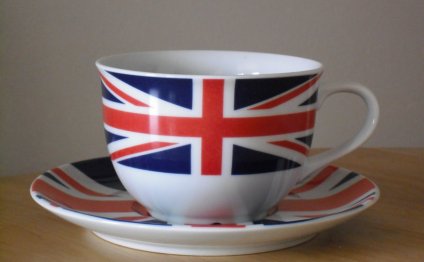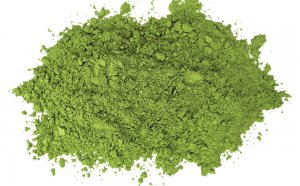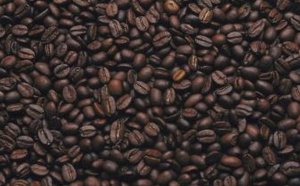
British Flag Coffee Mugs
Modern mugs, which are most commonly used for coffee or tea, likely evolved from beer steins. Larger than tea cups, mugs are generally defined as handled beverage containers made out of stoneware, earthenware, porcelain, or glass, serving approximately 12 ounces. Mugs are not usually included in formal china settings, whose tea or coffee cups are traditionally daintier. Besides their size, mugs are differentiated from tea cups by their insulating properties; they have thick walls and flat bottoms.
The earliest drinking mugs date to the Stone Age and were carved out of bone. Ancient Greek ceramists attached handles to their drinking vessels, while early metalworking techniques allowed artisans to create bronze, silver, or even gold cups with handles for hot beverages. Wood was also used for ancient drinking mugs, but for obvious reasons, few examples have survived.
Since ancient Egypt, jugs have been made into the shape of human figurines—similar objects have also been found in English archaeological digs from Roman to Medieval times. Modern-day “character jugs” came about in the 18th-century in the form of “Toby jugs, ” first made by Ralph Wood and his fellow Staffordshire potters. This seated British character, known as Toby, had a hat with three corners that could each form a separate spout for drinking.
John Doulton at Royal Doulton’s Lambeth art pottery took this concept and made his own line of political Toby jugs in the 1800s. In the 1930s, Doulton chief designer Charles J. Noke revived the idea of character jugs, but instead of showing the full figure, Noke's only featured the character's head and shoulders, like a handled bust. By the 1950s, Doultons’ character jugs included Dickens and Shakespeare characters, legends like Rip Van Winkle and Johnny Appleseed, and caricatures of Native Americans.
From the 14th century to 19th century, when mugs were used to serve beer in taverns all over Germany, England, and later the United States, clever potters came up with a way to use mugs for drinking games and betting. Puzzle mugs feature a trick that prevents the vessel from operating in the usual manner. Some have holes in the rim so that the only way to drink from them is through a secret opening in the handle. “Fuddling cups” are made of three mugs attached by their handles and each mug's walls—if the contents are not sipped in a particular sequence, the liquor will drain out. And a “Pythagorean cup” has a small syphon hidden in a center rod that prevents the mug from being filled any higher than the height of the rod.
The earliest reference to coffee dates to 10th century Ethiopia. From there, it spread to the Middle East, then to Italy in the 16th century, after which it was brought to the rest of Europe and the United States. In the mid-17th century, cafes and coffeehouses began to open around Europe.
In the United States, many credit the Boston Tea Party as the reason coffee became the favored hot drink of America over tea. That winter night in 1773, American colonists disgui...sed as Narragansett Indians snuck onto British ships and dumped 45 tons of tea into Boston Harbor as a protest against taxes from the English empire. From then on, some historians say, coffee symbolized the drink of liberty and independence from the British, necessitating coffee mugs. However, the real story behind coffee’s early success in the United States may have more to do with the slave trade.
Share this Post
Related posts
Green tea powder
Naturally Mood Enhancing Matcha contains L-theanine, an amino acid known to relax the mind. For this reason, matcha is also…
Read MoreCoffee Bean and Tea Leaf Nutrition
The Holidays must be upon us, because the Starbucks Pumpkin Spice Latte is back! All the hype got me wondering (as I’m prone…
Read More










